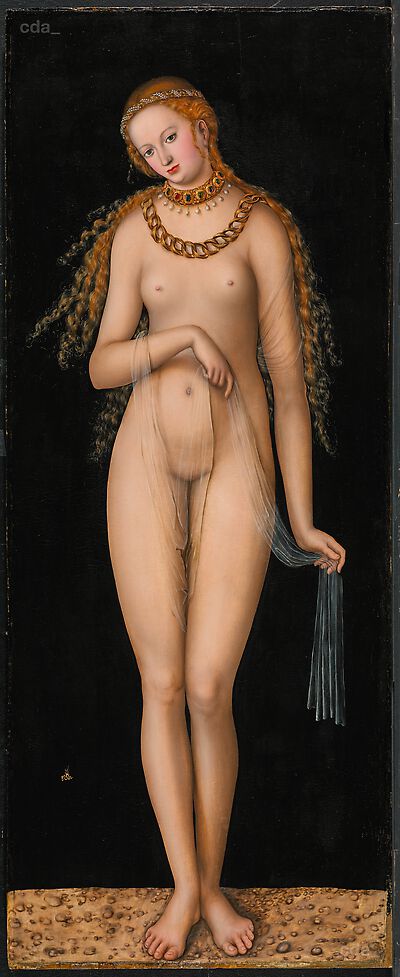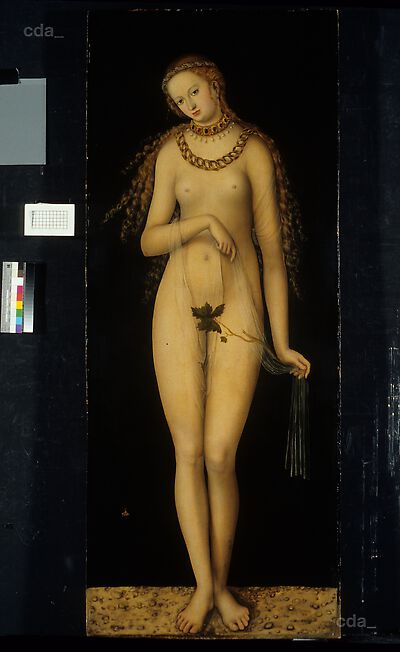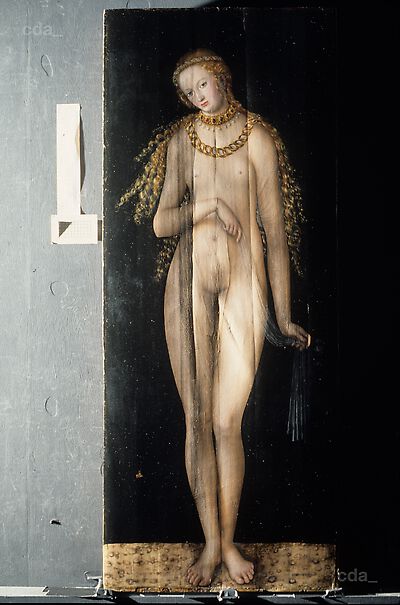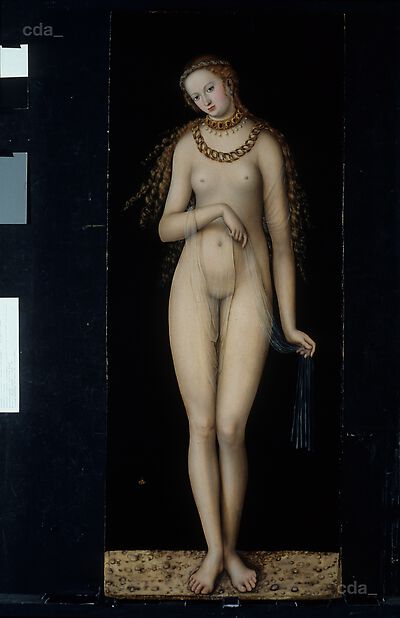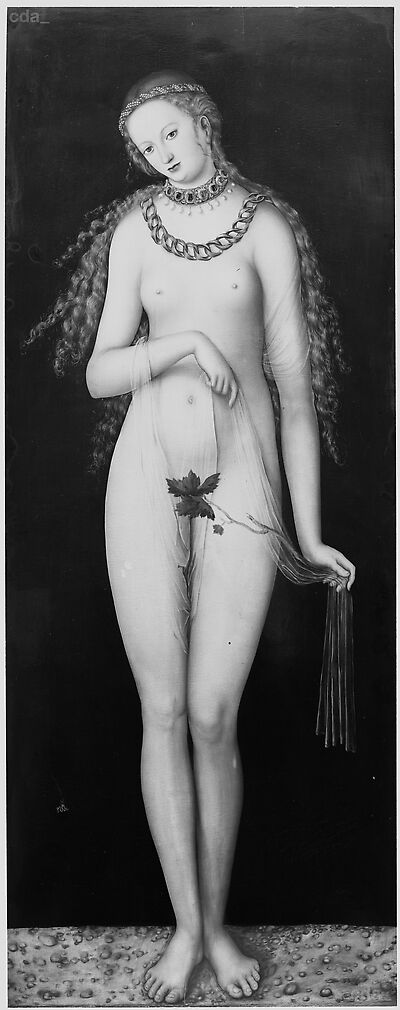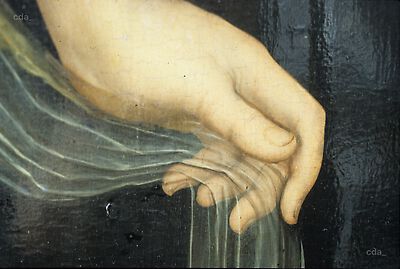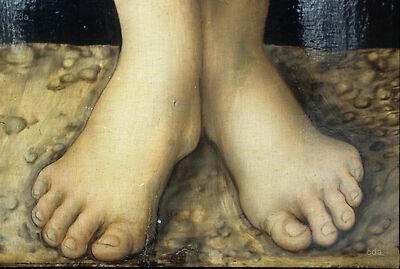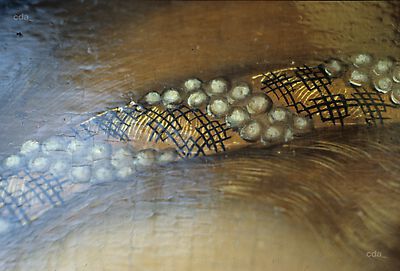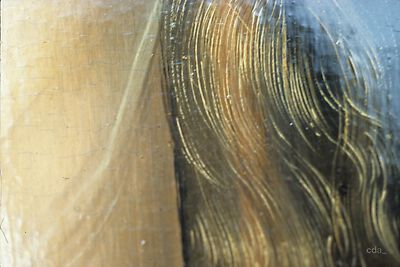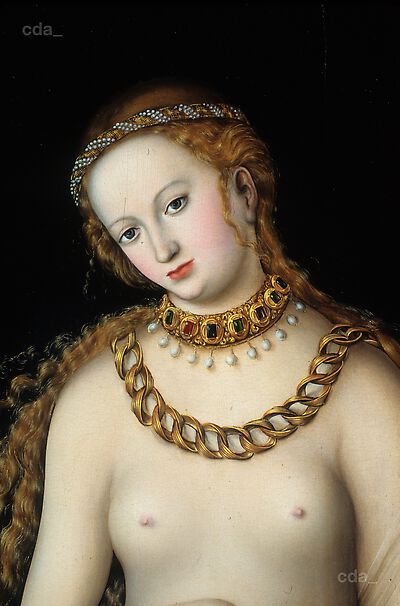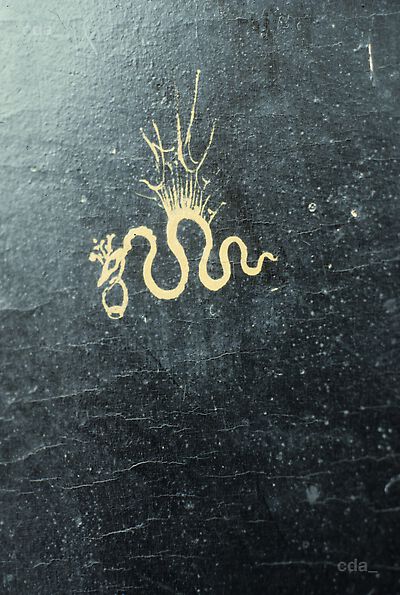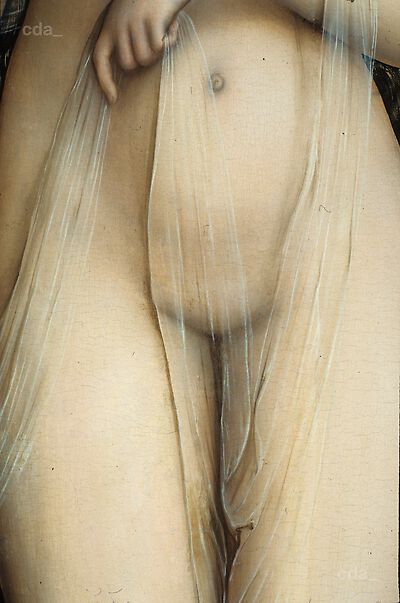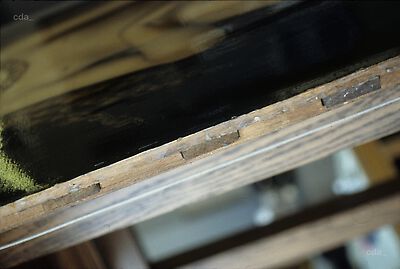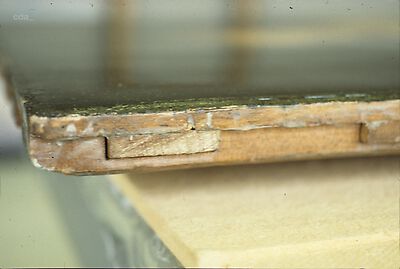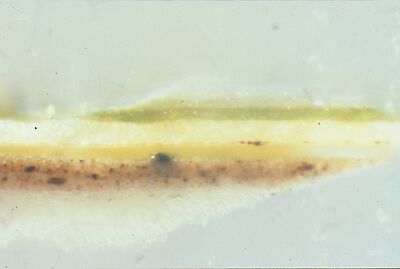- by 1870 in the collection of the von Zehmen family, Schloss Schleinitz, near Meissen, Germany
- by 1911 by descent to the Countess von Friesen-Schleinitz, Dresden and Schloss Schleinitz
- c. 1919 Countess von Friesen-Miltitz, Meissen, Allemagne, by inheritance
- by 1919 - 20.11.1924 Jacques Goudstikker (1897-1940), Amsterdam, purchased by Jacques Goudstikker
- 20.11.1924 - 06.1940 purchased by Ernst Paul Caesar Heinrich Proehl (1885-1973), Amsterdam
- 06.1940 - 05.1945 purchased by Reichsmarschall Hermann Wilhelm Göring (1893-1946), Germany, forced sale from Ernst Proehl for 75,000 fl
- 05.1945 - 20.10.1945 Munich Central Collecting Point of the U.S. Army's Monuments, Fine Arts and Archives section (MFA&A), Munich, Germany, recovered from Berchtesgaden, Germany
- 20.10.1945 - 05.02.1952 Stichting Nederlandsch Kunstbezit (SNK), The Hague, The Netherlands, restituted from Munich Central Collecting Point
- 05.02.1952 - 20.09.1952 Ernst Proehl, Amsterdam, restituted from the Dutch Bureau Herstelbetalings- en Recuperatiegoederen
- 20.09.1952 - 03.1953 E.J. Van Wisselingh & Co., Amsterdam, purchased from Ernst Proehl
- 03.1953 National Gallery, Ottawa, Canada, purchased from E.J. Van Wisselingh & Co.
Christian Schuchardt gives a detailed description of the painting when he writes in 1870 that he recently discovered the work in the collection of Mr. von Zehmen at Schleinitz castle, near Meissen. He attributes the work to Lucas Cranach the Younger . Schleinitz castle was owned by the von Zehmen family from 1773 until 1906, when it changed hands to the Von Friesen family.
See note and .
In a 1919 catalogue, Dutch art-dealer Jacques Goudstikker lists "the Countess von Friesen-Hiltitz, a descendant of John the Mild of Saxony" as the first known owner of the painting . He obviously misspelled the name of the von Friesen-Miltitz family, who resided at Siebeneichen castle near Meissen since c. 1550. At least two other paintings attributed to the Cranach school were in possession of the family from 1851 to 1935. Like the NGC's Venus, these were also part of Reichsmarschall Hermann Göring's collection between 1938 and 1945 .
The painting is included in a 1919 catalogue of the Dutch art dealer Jacques Goudstikker . In a letter to the NGC, dated April 14, 1952, Peter Eilers of E.J. Van Wisselingh & Co., Amsterdam, notes that the painting was sold by Goudstikker on November 20, 1924 to a Jewish banker from Amsterdam. In a later letter to the NGC, dated September 23, 1952, Eilers indentifies the buyer as Ernst Proehl .
See note . Ernst Proehl was a Dutch banker of German descent. In 1937, the Venus was exhibited in Berlin and in 1938 she was shown at the Museum Boymans in Rotterdam . Both exhibition catalogues refer to Proehl as owner of the painting. In a letter to the NGC's director H.O. McCurry, dated September 23, 1952, Peter Eilers writes: 'Mr. Proehl told me the following story, which will interest you. When the picture was exhibited at the Cranach exhibition in Berlin in 1937, Göring saw it. He asked Mr. Zimmermann, Director of the Kaiser-Friedrich-Museum and a friend of Proehl, to ask Mr. Proehl if he wanted to sell it. Proehl refused. Zimmermann repeated his request three times with no result. In 1939, The Netherlands' government made for their art-treasures shelters in the dunes and in one of these shelters it was stored away. When the Germans invaded Holland in 1940, they knew of course of these shelters. Now Göring got his chance and in June 1940 Proehl was forced to sell it to him.' .
In the OSS Art Looting Investigation Unit's Consolidated Interrogation Report of the Göring collection, we find a detailed description of the circumstances, how the Venus changed hands from Proehl to Goering: 'Hofer had been negotiating with Frau Proehl for the purchase of this picture for many months. He had not been able to come to an agreement, although Frau Proehl had promised that if ever she did sell the picture it would go to Göring. Finally Miedl, on hearing of the difficulty, said that he would obtain the picture at once by talking to Proehl as a businessman. He made good his promise. The picture was included in the first large Goudstikker deal. See below. Payment was made with securities and, according to Hofer, by letting in Proehl on some of Miedl's business deals. This is another case where Miedl was called in 'to talk as a business man' to a collector who was slow in selling a work of art. If the Renders case, (see below, Belgium) where there is definite evidence of pressure, is to be taken for comparison, then it may be that here also Miedl was called in to do the dirty work and apply pressure in some way or another' . The report also notes that Alois Miedl and Walter Andreas Hofer, Göring's main art purchasers, bought the Venus for 75 000 Fl. Later that year, the painting was transported from Miedl's establishment in Amsterdam to Berlin together with 600 other paintings of the Goudstikker collection . Along with a number of artworks by Cranach, Göring displayed the Venus at Carinhall, his country residence northeast of Berlin, where it was inventoried as RM no. 457. Shortly before Germany's capitulation in April 1945, it was evacuated from Carinhall with the rest of the collection and sent via Göring's castle Veldenstein to his alpine retreat in Berchtesgaden. The painting is included in a list titled 'Bilder aus Kurfürst nach Veldenstein' as no. 132, Grosse Venus mit Schleier - von Proehl , NARA, information kindly provided by Nancy Yeide, Head, Department of Curatorial Records, National Gallery of Art, Washington D.C., email, dated August 8, 2007, NGC curatorial file].
The Venus reappears in May 1945 in two photographs, leaning against a wall, showing Walter Andreas Hofer - who was now working for the American Forces - sorting through stacks of old master paintings . The confiscated Göring collection was stored and inventoried by members of the U.S. Army in Unterstein, near Berchtesgaden. The inventory list includes a Venus by Cranach from the Proehl collection, Amsterdam, and its dimensions correspond with those of the NGC's painting. . The painting was sent to the Munich Central Collecting Point on July 27, 1945, where it was inventoried as Mü. no. 5261 and restituted to the Netherlands on October 20, 1945 .
The SNK, a Dutch organisation, assigned to recuperate artworks looted from the Netherlands during the World War II, kept a file on Ernst Proehl (SNK archive, no. 164), which contains correspondence between Proehl and the SNK. According to these documents, Ernst Proehl applied for the restitution of Cranach's Venus on October 15, 1945, declaring that the sale of the work to Hermann Göring was forced. The painting remained in care of the Rijksmuseum, Amsterdam, until 1951 and was then put on display at the Maurithshuis in The Hague . The restitution of the Venus to Proehl was approved by the Bureau Herstelbetalings- en Recuperatiegoerderen on February 5, 1952, . Proehl had to pay f. 75.327,50 to the organisation, which was roughly the amount Göring paid in 1939 .
See note . On September 1952, the painting was handed over by the Mauritshuis to Pieter Eilers of Van Wisselingh & Co., who was authorised by Ernst Proehl .
See note .
The NGC purchased the painting in March 1953 from E.J. Van Wisselingh & Co. .
See also the entry in the DHM-database: Datenblatt RMG00480; https://www.dhm.de/datenbank/goering/dhm_goering.php?seite=5&fld_0=RMG00480 (accessed 17 Dec. 2019).
